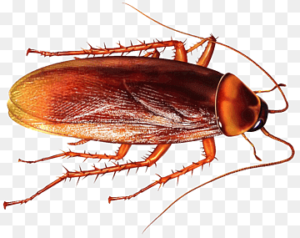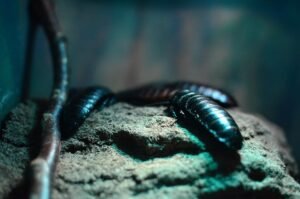Where Do Cockroaches Come From? Cockroaches – those ubiquitous, hard-shelled insects that seem to sneak into every home and make even the cleanest housekeepers shudder.
But just where did these creeping pests originate, and how did they end up being so abundant all over the world?
The Early Origins of the Cockroach
Cockroaches first emerged as a distinct insect species sometime during the Carboniferous period, about 300 million years ago. At that time, the enormous tropical rainforests and swamplands that covered much of the Earth provided an ideal breeding ground for these insects.
The warm, humid climate allowed the early proto-cockroaches to thrive and evolve specialized adaptations like their hardened outer shell and flat, oval-shaped bodies that enabled them to hide in narrow cracks and holes.
Over millions of years, cockroaches continued to hone their skills as expert survivors. As generalist omnivores, they can feed on all manner of organic matter from starchy foods to grease to decaying matter, which allows them to adapt to many environments.
Their rapid reproduction cycle also aids their survival – females produce an egg case, called an ootheca, which holds up to 50 offspring that hatch in as little as a month. So in no time at all, just a few pregnant female cockroaches can give rise to populations of hundreds or thousands.
The Global Spread of Pest Roaches
Four species of cockroaches in particular have achieved worldwide notoriety as both pests and public health threats – the German, American, Australian, and Brownbanded cockroaches.
Originally confined to discrete regions, maritime trade enabled these roaches to spread by stowing away in food cargoes, packing materials and ships themselves as they plied the oceans. The German and Brown-bodied cockroaches likely originated from Africa, while the American cockroach traces its roots to North Africa. Australian cockroaches, as their name suggests, came from down under.
As these cockroaches adapted to life around humans and became what entomologists call “synanthropic” (living with people), they began turning up everywhere – in kitchens, restaurants, warehouses, homes, and apartments. These environments provided a perfect source of food and harborage to allow cockroach populations to grow exponentially.
The Role of Cockroaches in Human Society
While cockroaches are primarily seen as household pests that contaminate our food and spread germs and diseases, they aren’t entirely detrimental to humans. As scavengers feeding on all manner of decaying organic matter, cockroaches play an important ecological role in decomposition and nutrient cycling.
While some people react with disgust at the notion of eating cockroaches, many cultures around the world consume roasted cockroaches as a common ethnic food or use them in traditional medicine. In areas like Thailand and China where cockroach farming has taken off, roaches have emerged as an economical source of food and nutrients.
where do flying cockroaches come from?
Flying Roaches Take to the Skies
While most of the household pest cockroaches are adept at skittering out of sight the moment a light switch is flipped, some species have developed the ability to grow wings as adults and take their escape efforts to the air.
The flying cockroaches most notorious for disturbing dinner parties and sending people ducking for cover originate from the tropics of Central and South America. Species like the Colombian cockroach (Blaberus colombiae), discoid cockroach (Blaberus discoidalis), and the giant cave cockroach (Blaberus giganteus) all inhabit decaying forest leaf litter and bat guano piles in their native habitats. As nymphs, they live flightless lives scavenging for sustenance until they undergo their final molt into mature, winged adults.
Seeking warmer temperatures just like humans, these bulky flying roaches started appearing in homes, restaurants, zoos and botanical gardens in subtropical regions and beyond as accidental stowaways.
Their next discovery was that buildings provided similar conditions to their native caves and burrows – warmth, shelter, darkness, humidity, and decomposing matter to eat. So just as pest cockroaches spread via global trade routes, some winged tropical species have begun establishing breeding populations in human structures far outside their ancestral tropical climates.
While the sudden appearance of big fluttering roaches can be alarming, very few flying cockroach species can survive long outside the tropics. But that doesn’t mean we won’t continue to see periodic home invasions! Controlling food sources and sealing up possible entry points helps discourage these uninvited guests.
where do german cockroaches come from?
The German Cockroach’s Rise to Prominence
Of all pest cockroach species that have integrated into human civilization, the German cockroach (Blattella germanica) reigns supreme. Despite its name, evidence suggests this prolific indoor roach actually originated in Northeast Africa, not Germany.
By the 1800s, German cockroaches had become established indoor pests throughout temperate regions globally. And today, you’d be hard pressed to find any restaurant, grocery store, apartment building or institution in a developed country that doesn’t harbor permanent colonies.
Their small size enables them to spread through tiny cracks and infiltrate everything from food packages to furniture. Females can produce up to 8 ootheca egg cases in their lifetime, each containing 30-40 offspring.
Under optimal conditions, just a single fertile German cockroach and her descendants can give rise to tens of thousands of roaches in a year. It’s this extraordinary reproductive capacity and human co-dependence that has enabled the German cockroach to thrive around the globe as few species have.
where do cockroaches come from in apartments?
Cockroaches can find their way into apartments through various means, exploiting cracks, gaps around doors and windows, and openings around utility pipes. They are skilled at squeezing through small spaces. Additionally, they might hitch a ride on items like grocery bags or second-hand furniture, hiding in seams during transportation.
In multi-unit buildings, they can travel through shared walls, using gaps and cracks as pathways. Drains and pipes provide another entry point, as cockroaches can navigate through sewer systems. Once inside, they are attracted to areas with food residue and water sources. Regularly cleaning living spaces, sealing cracks, and fixing leaks can help prevent infestations. If an infestation is present, professional pest control services may be needed for effective elimination.
where do big cockroaches come from?
Big cockroaches, such as the American cockroach or Oriental cockroach, typically originate from outdoor environments like gardens, sewers, and wooded areas. They can enter homes through various means, including open doors, windows, and cracks in walls.
Drains and sewer systems also provide pathways for them to access buildings. Additionally, these large cockroaches may travel through utility lines and shared spaces in multi-unit buildings. Infestations can occur when they hitch a ride on infested items or are inadvertently introduced into homes.
Prevention involves maintaining cleanliness, sealing entry points, and addressing moisture issues. Regular inspections and prompt action can help control and eliminate large cockroach populations, with professional pest control services recommended for severe infestations.
where do cockroaches come from in your house?
Cockroaches have the ability to infiltrate homes through various means, capitalizing on openings and searching for favorable conditions. Typical entry points encompass cracks in walls, gaps around doors and windows, and openings surrounding utility pipes.
They can also stow away on items like grocery bags or second-hand furniture. In buildings with multiple units, cockroaches might traverse through shared walls and utility lines. Drains and sewer systems serve as additional access points, and infestations may arise if items infested with cockroaches are introduced into the home.
Once inside, they are drawn to food residue and water sources. Preventive measures include maintaining a hygienic living space, sealing potential entry points, and addressing leaks. Regular inspections and prompt responses to signs of infestation are essential, and for effective elimination, it is advisable to seek professional pest control services.
where do cockroaches come from in the bathroom?
Cockroaches in the bathroom often find their way in due to factors that make this space conducive to their survival. The high humidity levels and presence of water sources in bathrooms attract these pests.
Leaks, standing water around faucets, or accumulations in showers can create an ideal environment for cockroaches. They may also enter through drains, utilizing their ability to navigate sewer pipes. Cracks in walls, gaps around doors and windows, and openings near utility pipes provide additional entry points.
If your home is already infested, cockroaches may migrate to the bathroom in search of moisture. Preventive measures include fixing leaks promptly, ensuring proper ventilation, sealing potential entry points, and maintaining a clean, dry bathroom. The use of insect screens on windows and vents can act as a barrier. Persistent infestations may require professional pest control services for effective elimination.
where do cockroaches come from in the kitchen?
Cockroaches often enter kitchens drawn by factors conducive to their survival. The presence of food particles and residues acts as a magnet, with kitchens providing ample sources like crumbs, spills, and unsealed food containers.
The availability of water, from sinks to various appliances, further enhances the appeal for cockroaches. They can gain entry through small cracks and openings in walls, floors, windows, and doors, seeking refuge in dark, secluded areas. Kitchen appliances, particularly those generating warmth, become suitable harborage for these pests.
Trash bins, holding organic waste, serve both as a food source and a breeding ground. Prevention involves maintaining cleanliness, promptly addressing spills, sealing food containers, fixing leaks, and regularly cleaning trash bins. The strategic closure of potential entry points by sealing cracks and gaps is vital. If an infestation persists, seeking professional pest control services becomes essential for effective elimination.
Conclusion
From their evolutionary origins in ancient tropical forests, cockroaches have gone on to stake their claim as one of humanity’s most ubiquitous companion species. Taking advantage of human trade and movement to migrate all over the globe, a few resilient pest cockroaches have become so well adapted to our dwellings that completely eradicating them has proven nearly impossible.




